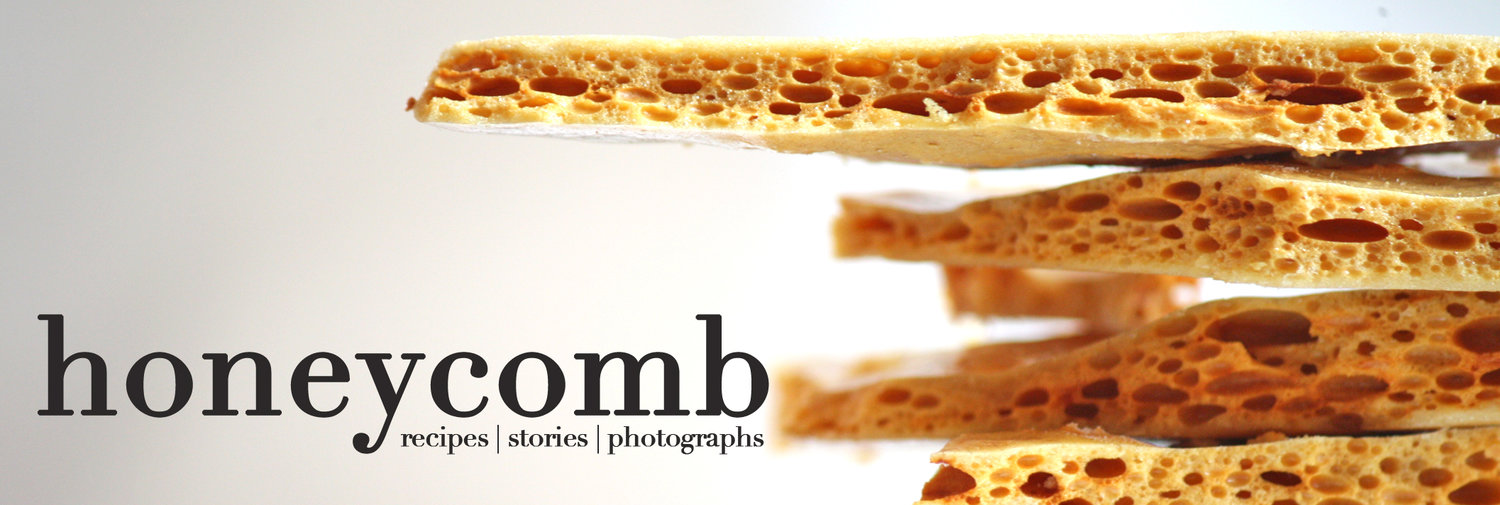The Art of Simplicity

I find that I like to make things complex with my cooking. Maybe it’s for the sake of a little challenge, making me feel like I’m furthering my knowledge or something. Sure, why not make the elaborate curry that requires me to spend ridiculous amounts of money on spices from a specialty food market? Sound like fun! Or, macaroons? Sure. Who doesn’t love tediously piping little circles of egg whites onto parchment? Even the other day my mom told me, “Oh Katie, you’re such a Martha.” I took it as a compliment.
But whatever the reason for this extravagance, I always tend to stray from the straight path, opting for rocky, muddy, and treacherous road instead. The flair, unfortunately, doesn’t always work in my best interest. Like the time I tried to make my family a vegetarian molé chili; “you’ll love it, the secret ingredient is chocolate!” And when we sat down to bowls of a substance totally indistinguishable from garbage sludge, I had to admit defeat. Or the time I attempted making treacle tart to bring to a British themed dinner, only to end up sealing the teeth together of all who ate the cement-like toffee. Their pained but polite words of approval settled uncomfortably in my stomach.

As much I do enjoy culinary adventuresome, I still can’t deny comfort in simplicity. The food that I post here are my weekend experiments. What I eat on a normal basis is more along the line of cheese and crackers or yogurt and granola or, my new strange but favorite fixation, egg salad sandwiches. To me, taking very few ingredients and combining them in ways that result in powerfully flavored dishes is almost as much of a challenge as making those extravagant meals. I like this challenge too and through trial and error, I’ve discovered that there are keys to great simplicity in food.
First, successful simplicity requires good ingredients. Simple food does not have extra fluff to mask anything under par. There are only few components and those need to be top notch to provide heightened and optimal flavor.
Also, there needs to be contrast. This is what turns ordinary and bland into something that gets people excited. Simple does not have to be boring at all. When two or three ingredients that are different yet complementary, not only in flavor but texture, come together, it causes all senses to stimulate at once making for a memorable eating experience. And finally, it needs to be cooked with love and care, the ingredient that makes a difference in all cooking.

So one rainy and cold evening a few weeks ago I made grilled cheese, the ultimate comfort food, but with a twist. I cut up thick slices of ricotta bread from the farmers market. I crammed the inside with slabs of creamy Fontina cheese, crispy organic bacon, and slices of just-underripe local pears. I gave the bread a lovely swipe of butter and let it spend some time getting hot and melty in the pan.

Though unconventional it worked. The sweet pears were a perfect match to the salty bacon and the Fontina, though mild, enveloped all in a buttery blanket of richness. It was the bread that really made this sandwich. It crisped up beautifully because of the high butterfat content and its milky and slightly tangy notes rounded out the whole package. I enjoyed it alone, a sublime retreat, that lasted mere minutes but felt like hours in food divinity. Each bite was like music as my teeth moved through layers of resounding crunch. In secluded gluttony, I licked my buttery fingers unashamedly for I had finally truly felt like I discovered the art of simplicity. Four ingredients (five if you count butter) and one amazing sandwich.



Fall Grilled Cheese
serves 1
All I can say about this is go all out. No skimping on this recipe please and savor it for every fatty and cheesy bite its worth. You can always work out later.
Ingredients
Ricotta bread (brioche, challah, or white country bread works too)
Fontina cheese, as much as you feel meets your standards of cheesiness
3 slices of bacon
1 slightly underripe pear
Butter
Heat a frying pan to medium and lay down the slices of bacon. Cook until crisp and drain on paper towels. Wipe out the pan and set aside for later.
As the bacon cooks, prepare the other ingredients. Slice two thick pieces of the bread and then slice as much cheese as you like. Slice the pear into quarters and then cut thin pieces from each of these. You will only need about half so you can eat the remaining slices as a snack.
To assemble lay about ¾ of the cheese on one piece of bread. Place the pears on top and them the bacon. Dot the remaining cheese on top of the bacon so it melts to the other piece of bread and holds the sandwich together. Lay the remaining piece of bread on top. Generously butter the outside of the sandwich.
Get a pan on medium heat and also turn the oven to about 400 degrees. Cook the sandwich in the pan for about 2 minutes a side, pressing down occasionally and constantly checking to make sure you don’t burn anything. Once both sides are golden brown and crispy, transfer the pan to the oven for about 2 minutes to let the cheese melt. Remove, cut any way you like, and enjoy.
